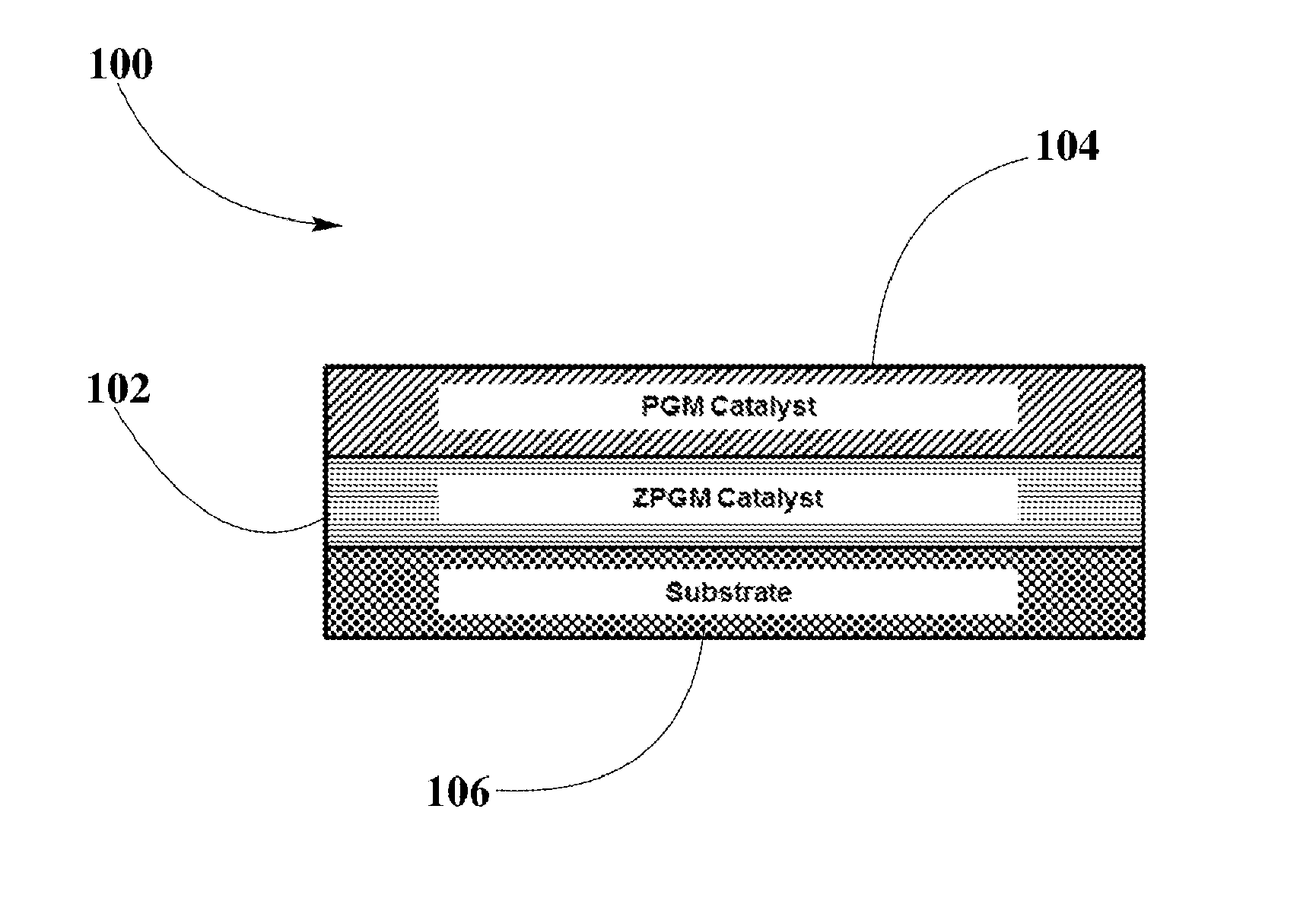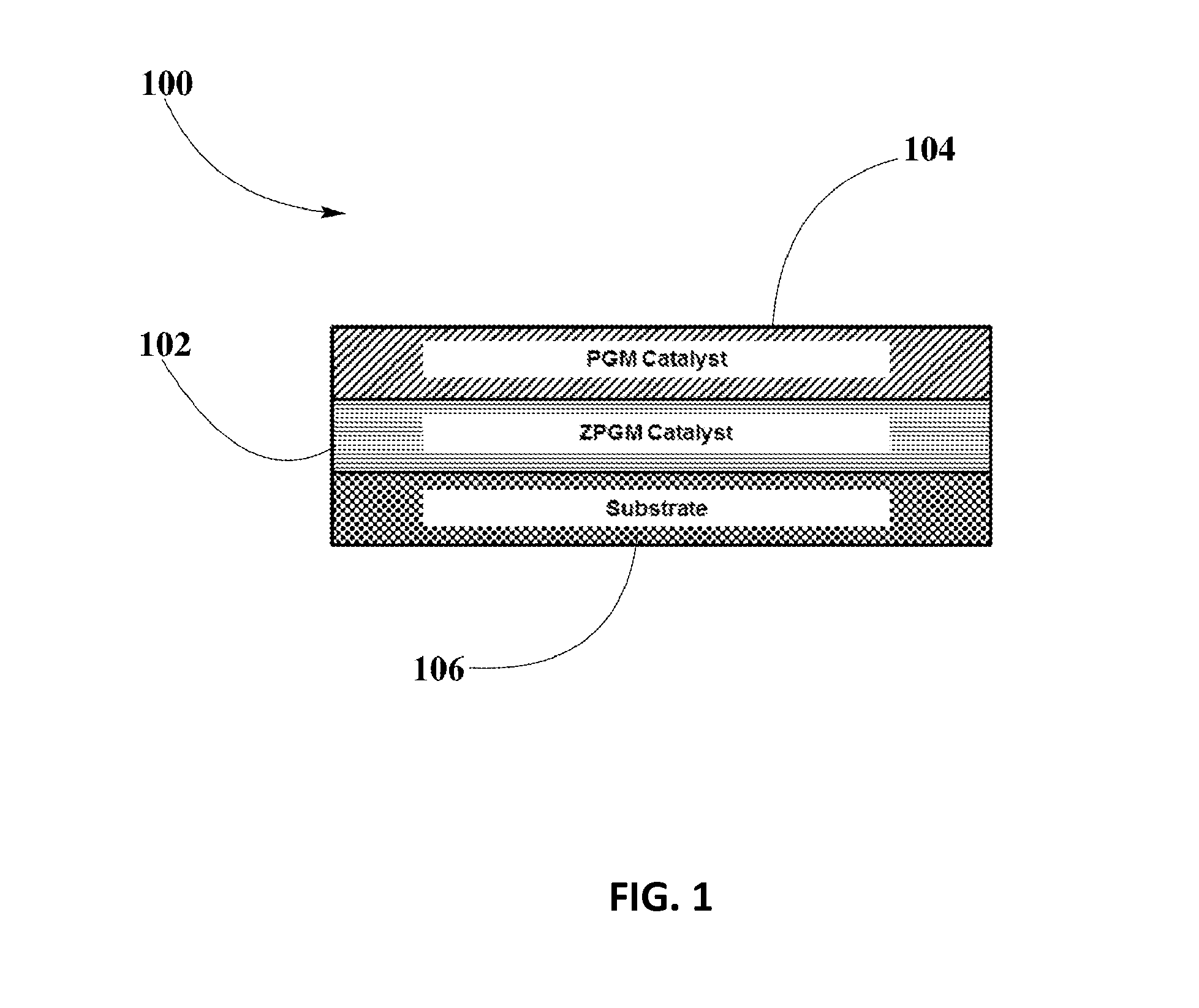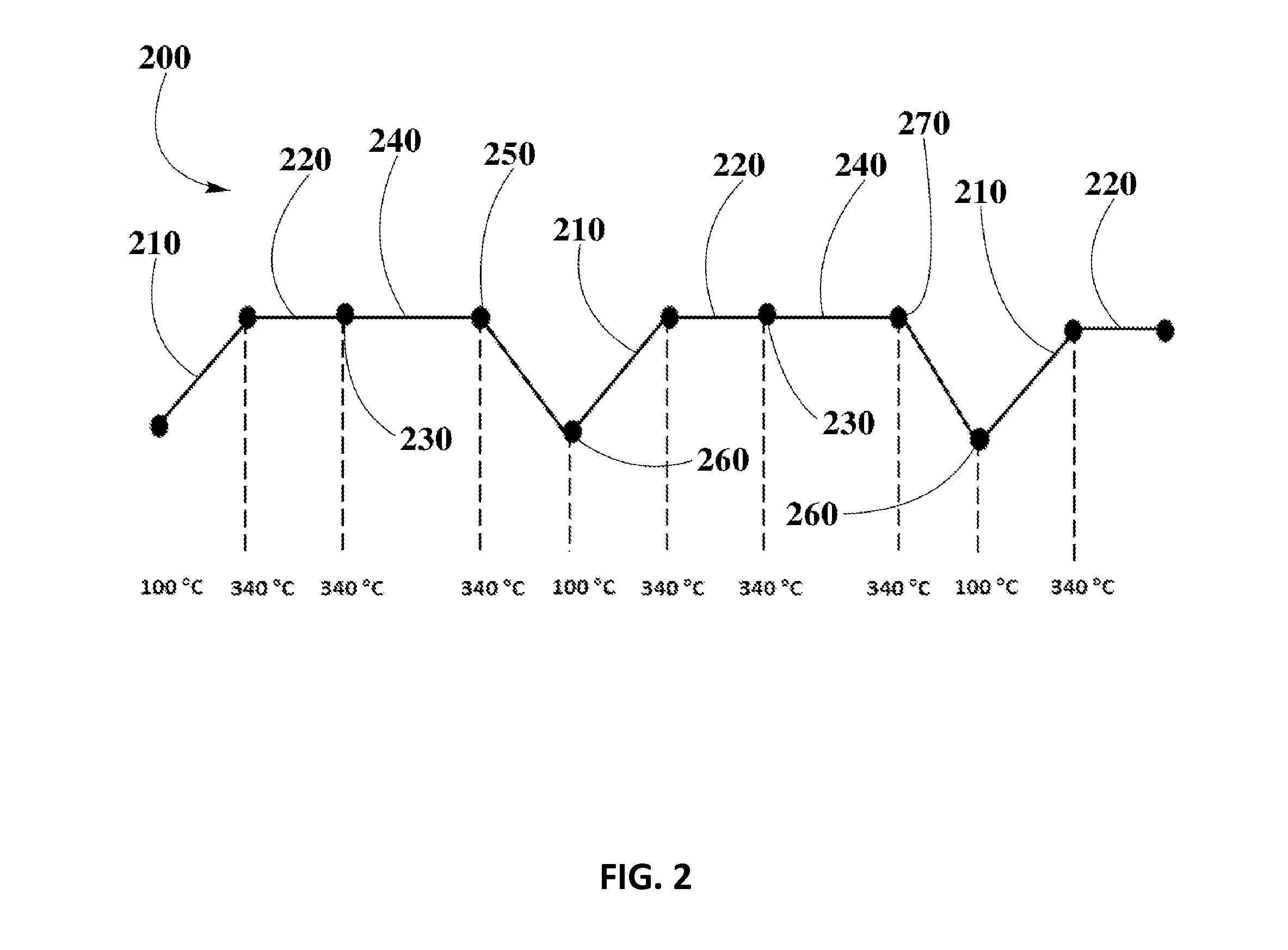Synergized PGM Catalyst with Low PGM Loading and High Sulfur Resistance for Diesel Oxidation Application
a diesel oxidation catalyst and synergized technology, applied in the direction of physical/chemical process catalysts, arsenic compounds, separation processes, etc., can solve the problems of increasing particle toxicity, increasing particle growth, and doc diesel oxidation catalysts are vulnerable to sulfur poisoning, etc., to achieve no oxidation, more stability, and more efficiency
- Summary
- Abstract
- Description
- Claims
- Application Information
AI Technical Summary
Benefits of technology
Problems solved by technology
Method used
Image
Examples
Embodiment Construction
[0025]The present disclosure is here described in detail with reference to embodiments illustrated in the drawings, which form a part here. Other embodiments may be used and / or other changes may be made without departing from the spirit or scope of the present disclosure. The illustrative embodiments described in the detailed description are not meant to be limiting of the subject matter presented here.
Definitions
[0026]As used here, the following terms may have the following definitions:
[0027]“Catalyst” refers to one or more materials that may be of use in the conversion of one or more other materials.
[0028]“Washcoat” refers to at least one coating including at least one oxide solid that may be deposited on a substrate.
[0029]“Substrate” refers to any material of any shape or configuration that yields a sufficient surface area for depositing a washcoat and / or overcoat.
[0030]“Overcoat” refers to at least one coating that may be deposited on at least one washcoat or impregnation layer....
PUM
| Property | Measurement | Unit |
|---|---|---|
| isothermal temperature | aaaaa | aaaaa |
| temperature | aaaaa | aaaaa |
| temperature | aaaaa | aaaaa |
Abstract
Description
Claims
Application Information
 Login to View More
Login to View More - R&D
- Intellectual Property
- Life Sciences
- Materials
- Tech Scout
- Unparalleled Data Quality
- Higher Quality Content
- 60% Fewer Hallucinations
Browse by: Latest US Patents, China's latest patents, Technical Efficacy Thesaurus, Application Domain, Technology Topic, Popular Technical Reports.
© 2025 PatSnap. All rights reserved.Legal|Privacy policy|Modern Slavery Act Transparency Statement|Sitemap|About US| Contact US: help@patsnap.com



